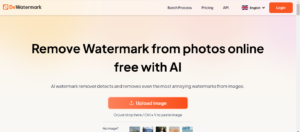Mastering Cold Email Outreach has become crucial in the fast-paced digital data world. It has become essential for businesses, job seekers, and experts alike. Please keep reading to know what cold outreach means and why it is essential today.
Cold email outreach is a strategic approach for people or businesses. They employ it to initiate talk with potential clients, customers, or associates with no previous interest. Compared to warm or hot leads, cold outreach targets people who may need to become more familiar with the sender or their offerings.
The primary goal of cold email outreach is to create a connection. It will generate interest and ultimately foster a meaningful relationship. It is ultimately leading to business openings, partnerships, or sales.
For a typical cold email outreach response, senders craft personal messages. They design messages to gain the recipient’s attention and showcase the value they can offer. It can include introducing products or services or highlighting relevant achievements.
Effective cold email outreach requires a careful balance between type and expanding ability. Senders aim to create a compelling account to reach a broader audience.
Successful cold email campaigns often involve thorough research, division of target audiences, and engaging content. Cold email outreach prompts recipients to take the desired action, whether responding to the email, planning a call, or exploring a product or service further.
Cold outreach meaning
Cold outreach refers to reaching potential clients, employers, or collaborators. It works for people who have not expressed a prior interest in your services or products. It is like a digital cold call, and executing it strategically can give impressive results.
Cold email refers to sending uninvited emails to people or businesses with whom the sender has no prior connection. Unlike warm or agreed email contact, recipients have approval to receive messages.
Cold emails are sent to a broader audience to initiate contact and establish relationships. It helps to achieve potential business goals such as sales, lead generation, or alliances.
The term “cold” implies the lack of pre-existing familiarity between the sender and the recipient. This feature makes cold email responses different from communications within traditional networks or among people. It works among those who have expressed interest in receiving word from the sender.
Cold email outreach is commonly used in sales, marketing, and networking strategies, requiring careful crafting of messages to capture the recipient’s attention and prompt a positive response.
What is cold email marketing?
Cold email marketing is a part of cold outreach, focusing on using emails to connect with people or businesses. Unlike traditional email marketing, cold email marketing targets recipients who have yet to choose, making it a difficult yet rewarding strategy.
Definition of cold email marketing
Cold email marketing is a proactive digital marketing strategy. It involves sending uninvited emails to various people or businesses without previous interaction with the sender.
It differs from opt-in or permission-based email marketing, where recipients have agreed to receive contact. Cold email marketing targets a broader audience to initiate contact and build relationships. You may drive desired actions like sales, partnerships, or collaborations.
Objectives of cold email marketing
The primary goals of cold email marketing include expanding the reach of a business. It involves creating leads and fostering connections with potential clients or partnerships. You may reach out to people needing to become more familiar with the sender.
Cold email marketing aims to create awareness and spark interest. Ultimately, it converts recipients into engaged prospects or customers. This approach is relevant for startups, small businesses, and people looking to gain a presence in a competitive market.
- Target audience division
- Crafting compelling cold emails
- Compliance with anti-spam laws
- Follow-up strategies
- Performance metrics and optimization
Target audience division
Before launching a cold email campaign, divide the target audience. Making segments according to relevant criteria, such as dynamics, interests, and behaviours, is crucial. It allows marketers to curate their messages more effectively.
It increases the prospects of resonating with recipients. Grouping also enables prioritised content creation. Segmentation will help to grab the attention of cold email recipients and make a lasting image.
Crafting compelling cold emails
Successful cold email marketing creates compelling and personalised email content. The initial email should have a brief yet engaging subject line that prompts recipients to open and read the message.
The body of the email should be tailored to address the recipient’s issues. It must portray the sender’s value proposal and include a clear call to action.
Personalization factors are vital for building rapport and credibility. They include addressing the recipient by name and referencing details relevant to their business or interests.
Compliance with anti-spam laws
Connecting to anti-spam laws is critical in cold email marketing. These laws could be the CAN-SPAM Act in the United States and the General Data Protection Regulation (GDPR) in the European Union.
Marketers must ensure that their cold email campaigns follow uninvited connection regulations. It includes providing recipients an option to opt out and accurate sender details.
Follow-up strategies
Cold email marketing continues after the initial outreach. Nonetheless, it requires effective follow-up strategies for nurturing relationships and maximising campaign success.
Follow-up emails are timely, relevant, and provide additional value or information. Automated follow-up arrays can help maintain engagement without overpowering recipients without bothering much.
Performance metrics and optimization
Marketers track key performance metrics to measure the success of cold email campaigns. They include open rates, click-through rates, and conversion rates.
Analysing these metrics provides insights into the campaign’s efficacy and allows for continuous optimization. A/B testing different elements of cold emails, such as subject lines, content, and calls to action. It helps refine strategies for better results over time.
Cold email marketing is a dynamic and strategic approach that can be powerful when executed carefully and ethically. It expands reach, generates leads, and builds valuable business relations.

Understanding the basics for cold emails that get responses
Purpose of cold email outreach
Cold email outreach initiates contact with those who have not previously engaged with the sender. The primary goal is creating a connection and generating interest. It lays the base for potential business choices, partnerships, or sales.
It is the opposite of warm leads that arise from existing relationships or opt-in contact. Cold email outreach involves reaching out to a broader audience. They must have the intention of creating awareness and building connections from scratch.
Targeting and segmentation
One basic aspect of cold email outreach is the careful targeting and partition of the audience. Before crafting emails, senders conduct research to identify potential prospects. You must identify the audience by knowing the dynamics, industry, or other relevant criteria.
Parting the target audience allows for creating tailored messages, increasing the chance of resonating with recipients. This strategic approach ensures that the cold emails are relevant to the specific needs and interests of the targeted people.
Personalization and adaptation
Personalization is a key element in the success of cold email outreach. It involves:
- Tailoring each email to the specific recipient
- Addressing them by name
- Incorporating details relevant to their business or interests.
Adaptation goes beyond just using a recipient’s name. It involves crafting content that speaks directly to their pain points, challenges, or goals. Effective embodiment and adjustment make cold emails more engaging. It increases the chances of capturing the recipient’s attention and prompting a positive response.
Crafting engaging cold emails
Crafting engaging cold emails is crucial for capturing the recipient’s interest and enhancing further interaction. The email should have a compelling subject line that attracts the recipient to open it.
The body of the email should be brief, focused, and provide value. You may include details about the sender’s offerings and solutions to the recipient’s challenges. It may also contain reasons for initiating contact.
A clear call to action is essential, guiding the recipient on the next steps. Whether it’s replying to the email, planning a call, or exploring a product or service further.
Compliance with anti-spam regulations
Cold email outreach must follow anti-spam regulations to maintain ethical standards and legal submission. It includes providing a clear and easy option for recipients to quit further talk.
Laws like the CAN-SPAM Act and GDPR dictate the situation. Ensuring that the emails are not deceptive, represent the sender, and include the right physical address ensures the outreach efforts. Applying these regulations is a legal requirement and helps to build trust with recipients.
Follow-up strategies
Follow-up strategies are essential to the success of cold email outreach. After the initial email, senders employ timely and relevant follow-ups to foster the relationship. Follow-up emails may provide extra information. You may also address any questions or concerns or offer further value.
You may set up automated follow-up arrays to maintain consistent contact without prying. Follow-up strategies keep recipients engaged and move them toward the desired action.
Understand and employ the basics of cold email outreach to contribute to the strategy’s efficacy. Enable businesses and people to expand their networks and generate leads. Moreover, you may create meaningful connections in the digital realm.
Differentiate cold email from traditional email
Understanding the basics that set cold emails apart from traditional ones is pivotal. Traditional emails often rely on existing relationships or opt-in subscribers. On the other hand, cold emails start contact with prospects who are new to your brand.
Cold email meaning and significance
The importance of cold emails lies in their ability. They open doors that may have remained closed otherwise. It works as an opportunity to make a compelling first impression. It presents your value proposal to a new audience.
Cold outreach in various contexts
B2B cold email outreach
In the domain of B2B, cold email outreach is a powerful tool for connecting with potential clients. Crafting customised and targeted emails is essential. Additionally, utilising effective templates forms the backbone of successful B2B cold outreach.
Cold email template for job applications
For job seekers, projecting in a crowded market is essential. A well-crafted cold email outreach template for job applications can make all the difference. It portrays your skills and passion to potential employers.
Email cold calling
The inclusion of cold calls into email outreach adds a personal touch. This hybrid approach ensures your message gets noticed in emails. It increases the likelihood of a positive response.
Crafting compelling cold email templates
Elements of successful cold email outreach
Subject lines that grab attention
The subject line is the portal to your email. Crafting attention-grabbing subject lines ensures your email isn’t in the spam folder. Keep it brief, interesting, and relevant to the recipient’s interest.
Building reliability and trust
Creating credibility from the start is vital. Provide social proof and highlight relevant attainments. Share success stories to infuse trust in potential clients or employers.
Cold email example analyses
Analysis of successful cold email examples provides useful insights. Examine what works and why certain emails get responses. It can serve as a blueprint for crafting your outreach strategy.
Key elements of cold email marketing
Cold email marketing is a targeted digital marketing strategy. It involves initiating uninvited email connections with those who have not previously adopted interest. The term “cold” signifies the lack of a prior relationship between the sender and recipient. Such measures make it clear from warm or opt-in email marketing.
The primary goal is to introduce products, services, or opportunities. It fosters brand awareness, generates leads, and converts recipients into customers or partners.
Objective setting
Cold email marketing can serve various targets. It includes lead generation, sales, partnership building, event promotion, and creating awareness. Additionally, define the desired outcomes crucial for shaping the content and structure of the email movement.
Target audience research
Conduct thorough research before starting a cold email campaign. It will help to identify and segment the target audience. Understanding dynamics, industry specifics, and personal priorities helps tailor relevant messages.
List building
Building a targeted email list is a basic step. It involves sourcing email addresses of potential prospects who align with the target audience. Compliance with data protection laws and regulations is supreme during this stage.
Personalization
Personalization is a basic factor in cold email marketing. Beyond addressing recipients by name, it involves tailoring content based on their industry, interests, or challenges. Tailored emails resonate better with recipients and enhance the chances of engagement.
Crafting compelling emails
You must craft the email to grab attention and convey the intended message. It includes a compelling subject line and informative body content. Additionally, it adds a clear call-to-action (CTA) that guides recipients on the next steps. These steps include replying to the email, visiting a website, or scheduling a call.
Compliance with anti-spam laws
Adherence to anti-spam laws, such as the CAN-SPAM Act in the U.S. and GDPR in the EU, is crucial. Cold email marketers must provide a clear mechanism for recipients to drop out. Identify the sender and include a valid physical address. Failure to submit can lead to legal outcomes and damage the sender’s reputation.
Follow-up strategies
Successful cold email marketing extends beyond the initial outreach. Effective follow-up strategies involve sending emails immediately to foster the relationship. Automation tools can curate follow-ups, which maintains consistent connection.
Tracking and analytics
Controlling key performance indicators (KPIs) is essential for assessing the efficacy of a cold email campaign. Certain metrics provide insights into the campaign’s success and areas for improvement. They include open rates, click-through rates, conversion rates, and responses.
Best practices in cold email marketing
Permission-based outreach
Cold email marketing is uninvited. It would help to target people with a reasonable prospect of interest in the offering.
Value-centric approach
Highlight the value proposition in cold emails. Communicate how the product or service addresses the recipient’s needs or challenges.
Testing and optimization
A/B testing different elements of cold emails, such as subject lines, content, and CTAs. It allows marketers to refine their approach based on data-driven insights.
Building trust and credibility
Social proof, testimonials, or relevant achievements in cold emails can greatly help. It helps to build trust and credibility, increasing the chance of a positive response.
When executed strategically, cold email marketing can be a powerful tool. It helps to reach new audiences, expand market presence, and drive desired actions. Achieving ideal results requires balancing creativity and compliance with legal and ethical standards.
Implementing cold email outreach strategies
Targeted audience research
Identifying the right prospects
Successful cold outreach begins with knowing your target audience. Conduct thorough research to understand their pain points, needs, and choices. It will enable you to tailor your message well.
Employ data for personalization
Data is a mighty ally in personalization. Influence available data to customise your emails. Show a genuine understanding of the recipient’s business or personal needs.
Setting clear objectives for outreach
Defining goals and key performance indicators
Before starting on your cold outreach journey, set clear goals. Define your goals, which help you to shape your strategy. Whether securing new clients, landing a job interview, or fostering partnerships.
Establishing realistic expectations
While the potential rewards of cold outreach are solid, setting realistic expectations is essential. Only some emails need to result in a positive response. However, a well-structured strategy increases the chance of success over time.
Cold email outreach templates
Effective cold email outreach templates require a balance of expertise, personalization, and clarity. Here are three templates tailored for different scenarios:
Template 1: Initial outreach
Subject: [Brief and Interesting]
Hi [Recipient’s Name],
I hope this email finds you well. My name is [Your name], and I’m reaching out to [Your company]. I recently came across [Something relevant or interesting about the recipient or their company] and was impressed with [Specific aspect].
We specialise in [Brief description of your product/service] and have successfully assisted [Similar companies or clients] in achieving [Specific result]. We could bring similar value to [recipient’s company name] by [Briefly mentioning a potential benefit].
Would you be available for a quick call [suggest specific time options] to discuss this further? I would love to learn more about [recipient’s goals or challenges] and explore how we can contribute to your success.
I am looking forward to your response.
Best regards,
[Your full name]
[Your position]
[Your contact information]
Template 2: Follow-up
Subject: Quick follow-up on my previous email
Hi [Recipient’s name],
I hope this message finds you in good spirits. I am following up on my previous email regarding [Briefly remind them of the topic]. I understand you might be busy, but our [Product/service] could be a useful asset for [recipient’s company name].
To improve things, I have attached a [Case study/whitepaper/resource] that provides more insights into how we have helped companies like yours in the past.
If now is not the right time, could we schedule a brief call next week? Your insights would be incredibly valuable.
Thanks for considering, and I look forward to your response.
Best regards,
[Your Full Name]
[Your Position]
[Your Contact Information]
Template 3: re-engagement after no response
Subject: A quick check-in
Hi [Recipient’s name],
I hope this email finds you well. I understand your inbox can get busy, and I wanted to ensure this is noticed.
I previously reached out regarding [Briefly remind them of the topic], and I am still enthusiastic about the possibility of [Briefly mention the potential benefit].
If someone else is the right person to discuss this with, please direct me to the appropriate contact.
Your time and consideration are greatly appreciated.
Best regards,
[Your full name]
[Your position]
[Your contact information]
Customise these templates according to your specific industry, offerings, and the context of your outreach. The basic elements for successful cold email outreach are personalization, relevance, and a clear call to action. Additionally, always ensure compliance with relevant data protection laws and regulations.
Integrating cold calls into outreach
The cooperation between cold emails and calls can enhance your outreach efforts. Craft email cold call templates that integrate with your email content. It will provide an appealing and engaging contact approach.
Order emails and calls for impact
Order your emails and calls to ensure a consistent and compelling narrative. Develop a sequence that builds harmony and interest, increasing the chances of a positive outcome.
Overcoming challenges in cold outreach
Dealing with rejections
Analysing rejection patterns
Rejections are certain in cold outreach. However, understanding rejection patterns can offer valuable insights. Analyse common reasons for rejection and adjust your strategy accordingly to improve outcomes.
Adjusting Strategies for Better Results
Adaptability is key in cold outreach. Use rejection as a chance to refine your approach. Adjust your templates, messaging, or feedback accordingly. It depends on the feedback received from unsuccessful outreach attempts.
Navigating legal and ethical boundaries
Compliance with Anti-spam laws
Staying within legal limits is crucial for the success and viability of your cold email outreach. Adapt anti-spam laws in your target regions and ensure your outreach complies with these regulations.
Ethical ideas in cold email marketing
Maintaining ethical standards is essential. Clarity, honesty, and respect for the recipient’s time and choices are essential. It should be at the core of your cold email marketing strategy.
Continuous improvement and optimization
A/B testing cold email templates
Various approaches for optimization
Optimization is a continuous process. Apply A/B testing for your cold email templates. Experiment with subject lines, content, and calls to action. It will help to identify what resonates best with your audience.
Adapting to audience feedback
Pay attention to feedback from your audience. Use these details to adapt and refine your cold email outreach strategy. Focus, whether it’s through responses, conversions, or other metrics.
Cold email outreach metrics
Monitoring key metrics
Metrics are your scope in the world of cold outreach. Monitor key gauges such as open, response, and conversion rates. Analysing these metrics provides actionable insights to improve.
Adjusting strategies based on data
Data-driven decision-making is the base of successful cold email outreach. Regularly review your metrics and adjust your strategies. It depends on the data collected, ensuring your approach aligns with your goals.
Frequently Asked Questions (FAQs)
What does cold outreach mean?
Cold outreach refers to reaching out to new contacts without prior engagement. It includes various methods, such as cold calling, social media outreach, and cold email marketing.
Why is cold email marketing important?
Cold email marketing is important as it allows businesses, job seekers, and experts to expand their reach. It will make you connect with new chances and make a compelling first impression. Doing right can lead to valuable partnerships, clients, or job offers.
What are B2B cold email outreach strategies?
In B2B cold email outreach, strategies involve researching and targeting businesses. All these things benefit your products or services. The main elements include embodiment, effective templates, and understanding the prospect’s needs.
How do you craft a compelling cold email template?
Crafting a beneficial cold email template involves attention-grabbing subject lines. Moreover, it involves personalization and building credibility. Highlighting your value and keeping the message concise and relevant are crucial aspects.
Provide a cold email template for the job.
Subject: Enthusiastic [Your profession] ready to elevate [Company]
Hi [Hiring manager’s name], I am [Your name], excited about contributing my [Your skills] to [Company] and eager to discuss how I can add value to your team.
Conclusion
Mastering the art of cold email outreach is essential in the active digital communication landscape. You may craft compelling templates and implement effective strategies by understanding the basics.
You may overcome challenges, and by continuously optimising, you gain success in connecting with new choices and audiences. Adaptability and a commitment to ethical practices will be your allies. Navigate the ever-evolving world of cold outreach.
Cold email outreach is a dynamic and strategic approach that when executed thoughtfully. It may open doors to valuable opportunities in the digital landscape. Marketers can establish connections by blending personalization, professionalism, and a clear value proposition.
One may not achieve the same target through traditional means—however, the success of cold email outreach joints in providing genuine value to recipients. To build trust and credibility, one may achieve this by respecting one’s time and maintaining compliance with anti-spam regulations.
Evolving digital cold email outreach remains a relevant and effective method for expanding networks. It will help generate leads and foster meaningful relationships.
Include feedback, analysing of performance metrics, and refining outreach strategies over time. Businesses and people can adapt their approaches to meet the ever-changing demands of their target audience.
Ultimately, the art of cold email outreach lies in finding the delicate balance between automation and personalization. Ensure that each message resonates with recipients, maximising the potential for positive engagement and fruitful connections.




